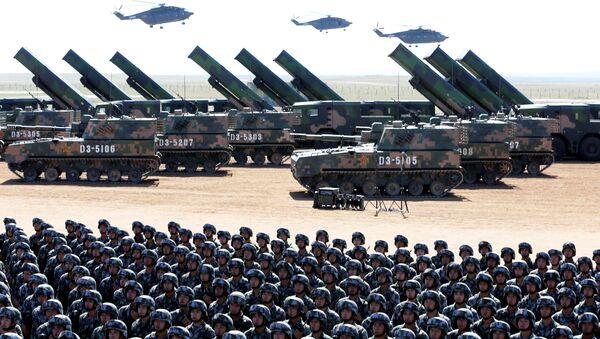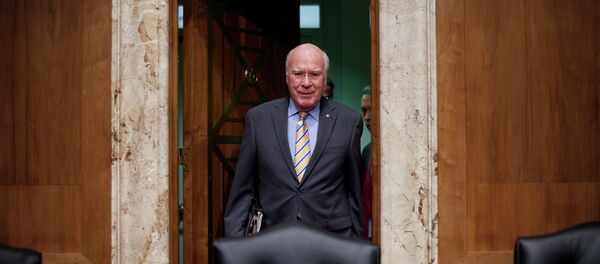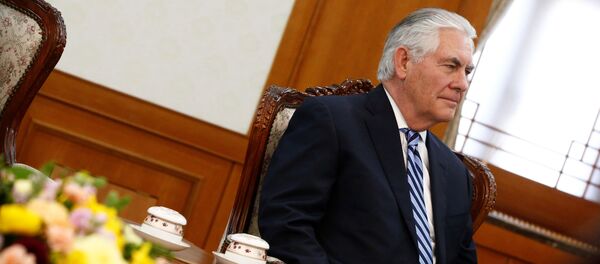On July 31, the People's Liberation Army Rocket Force (PLARF) conducted missile exercises against a THAAD mock-up target.
Citing US government sources with knowledge of the matter, The Diplomat reported that "the PLARF employed four DF-26C intermediate-range ballistic missiles (IRBM), ten DF-16A medium-range ballistic missiles, and six CJ-10 land attack cruise missiles in the live fire portion of the exercise."
At the same time, on August 8 the country's Navy completed its major naval exercises in the Yellow Sea which is located between China and the Korean Peninsula.
South China Morning Post specified Tuesday that the People's Liberation Army Navy which took part in the Yellow Sea drills had practiced "offensive and defensive maneuvers with surface ships, submarines, air support, and coastguard forces."
Kashin pointed out that judging from the known data the Chinese naval drills could have been aimed against a powerful navy which could dispatch its ships to the region, in close proximity to China's largest cities of Beijing and Tianjin.
After conducting missiles and naval exercises China demonstrated that in the event of an uncontrolled aggravation of the situation on the Korean Peninsula, the PLA would be able to ensure China's national security, according to Kashin.
Operating in close proximity to China's territory, the PLA military are preparing to take full advantage of their anti-ship missile carriers and a huge arsenal of medium-range ballistic and cruise missiles in the region
"The Chinese will seek to maintain lasting dominance over the waters of the adjacent seas, which is necessary, in particular, to ensure the security of the capital; thus they will be able to deal a devastating blow to the forces threatening them on the Korean Peninsula, if necessary," Kashin underscored, adding that at the same time, China would be ready to intervene in the conflict depending on how the situation would unfold.
"The failure of this policy has already been recognized in the US, but the Americans are still unable to formulate a new strategy," Kashin told Sputnik.
To complicate matters further, US President Donald Trump's approach to the Korean situation looks rather inconsistent, the analyst noted, referring to the US president's controversial pledge to respond to North Korean threats with "fire and fury."
"After many years of failure, countries are coming together to finally address the dangers posed by North Korea. We must be tough & decisive!" Trump tweeted Tuesday.
After many years of failure,countries are coming together to finally address the dangers posed by North Korea. We must be tough & decisive!
— Donald J. Trump (@realDonaldTrump) 8 августа 2017 г.
"The US policy remains uncertain and unpredictable," Kashin noted, "In these conditions, China, whose major economic centers are located next to the alleged theater of military operations, should keep the troops ready."




